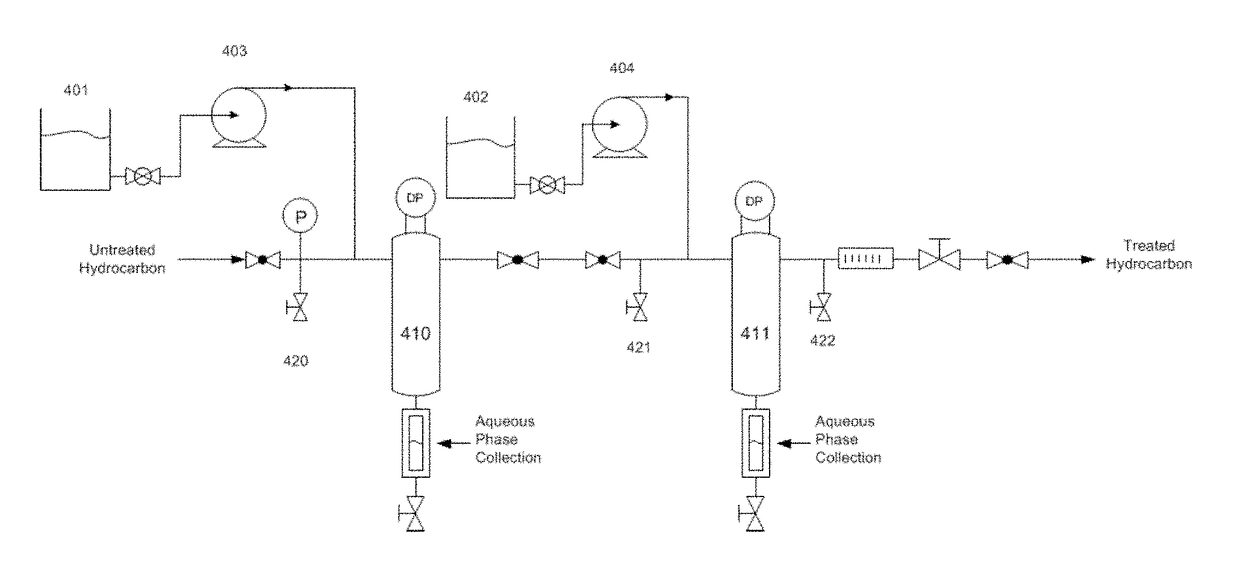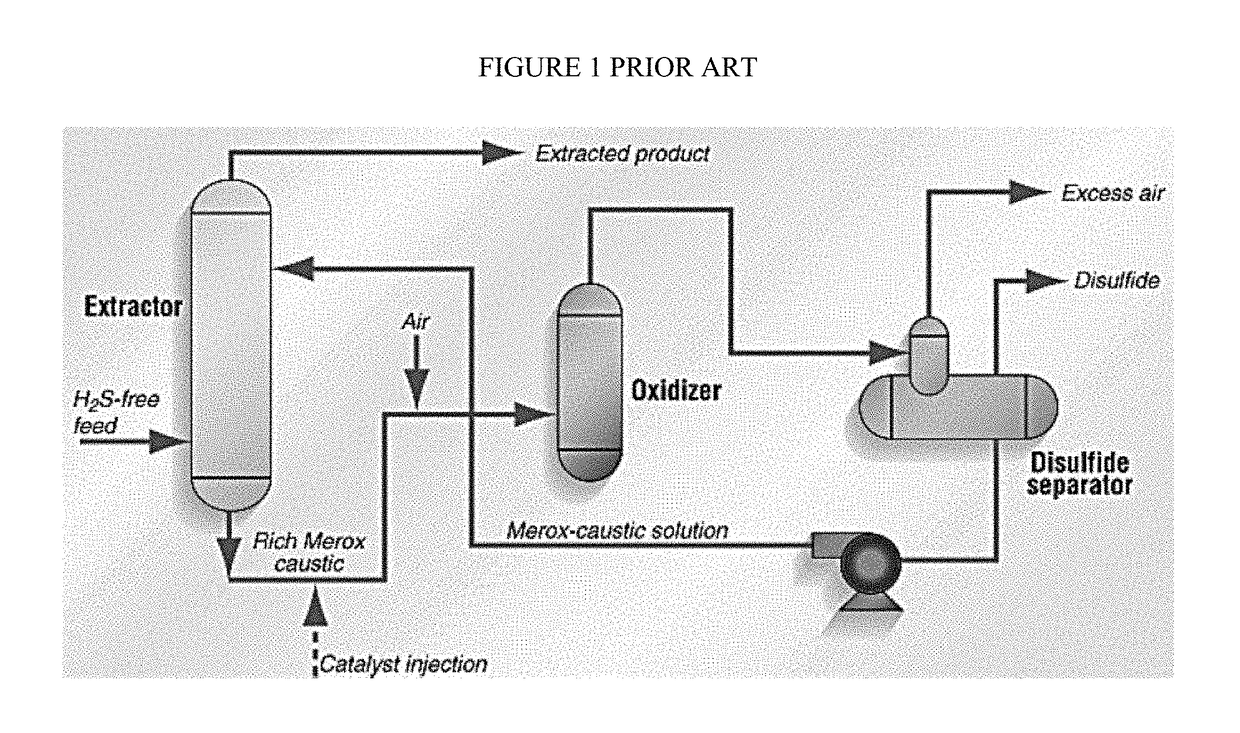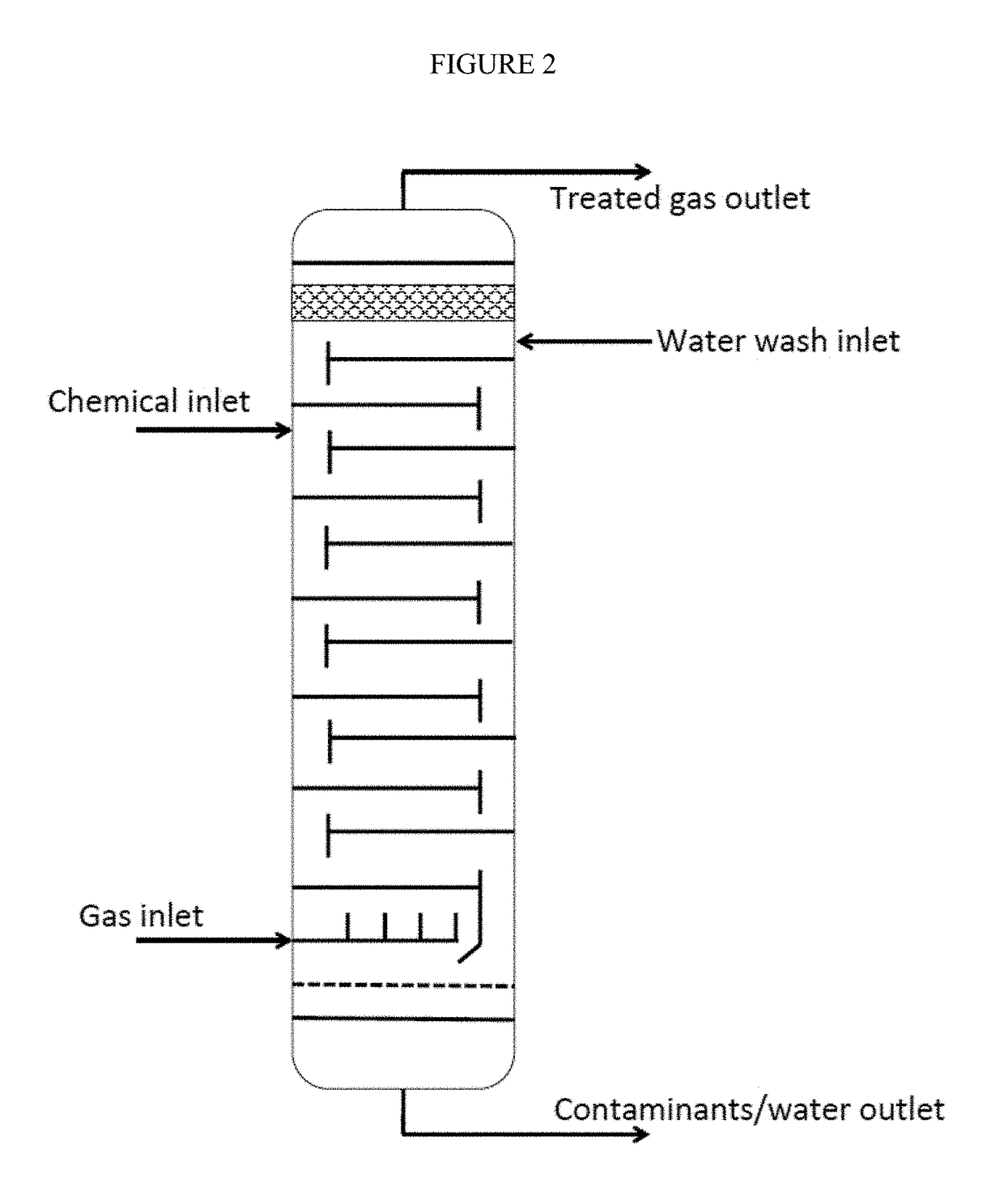Removal of hydrocarbon contaminants
a technology of hydrocarbon steam and contaminants, which is applied in the direction of gaseous fuels, separation processes, water treatment, etc., can solve the problems of low contamination removal rate, small environmental footprint and site requirements, and reduce post-treatment costs, so as to reduce the effect of capital costs and reducing post-treatment costs
- Summary
- Abstract
- Description
- Claims
- Application Information
AI Technical Summary
Benefits of technology
Problems solved by technology
Method used
Image
Examples
example 1
[0078]The presently described extractor-separator system was used to remove sulfur-containing contaminants from a liquid hydrocarbon stream. The novel system and methods were designed to be flexible and usable with a variety of processing equipment, particularly those already established.
[0079]In the present example, a miniaturized extractor-separator system was assembled using the same treatment stages as a full size extractor-separator system described above. FIG. 4 shows the schematics of the small scale extractor-separator system, including the high pressure injectors (403, 404) and injection points for the additive (401) and the water (402), in addition to the valve arrangement, the contactor (410) and extractor stages (411) and the effluent streams. Additions to the miniaturized extractor-separator system include sampling points to monitor the process.
[0080]A 1.65 GPM slipstream of liquid condensate was processed by the miniaturized extractor-separator system. This on-site tes...
example 2
[0111]The presently described extractor-separator system can also recover amines from a treated liquid hydrocarbon stream. Amine recovery is slightly different from the sulfur-containing species in Example 1 in that a chemical additive is not needed to transform the amines into water-soluble compounds. Furthermore, this example demonstrates the flexibility of the extractor-separator system and its incorporation in an existing process.
[0112]In the present example, an existing amine gas treating system was modified to include the extractor-separator system. In an amine gas treatment, alkanolamines (commonly referred to simply as amines) are used to remove hydrogen sulfide (H2S) and carbon dioxide (CO2) from gases, typically liquid petroleum gas (LPG). Considerable amounts of amine carry over are generally present in the treated liquid hydrocarbon streams, thus necessitating its removal. The recovered amines can then be reused in the treatment.
[0113]Process Design
[0114]A pre-existing l...
PUM
| Property | Measurement | Unit |
|---|---|---|
| mole ratio | aaaaa | aaaaa |
| mole ratios | aaaaa | aaaaa |
| mole ratios | aaaaa | aaaaa |
Abstract
Description
Claims
Application Information
 Login to View More
Login to View More - R&D
- Intellectual Property
- Life Sciences
- Materials
- Tech Scout
- Unparalleled Data Quality
- Higher Quality Content
- 60% Fewer Hallucinations
Browse by: Latest US Patents, China's latest patents, Technical Efficacy Thesaurus, Application Domain, Technology Topic, Popular Technical Reports.
© 2025 PatSnap. All rights reserved.Legal|Privacy policy|Modern Slavery Act Transparency Statement|Sitemap|About US| Contact US: help@patsnap.com



